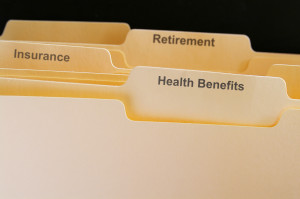Benefits are driving high personnel costs in Philadelphia schools

Benefits are the root of increased personnel costs in the School District of Philadelphia.
By Maura Pennington | Watchdog.org
PHILADELPHIA — Last spring, six elementary school librarians were laid off in the School District of Philadelphia. Those who remain are being richly rewarded.
Elementary school teachers and librarians will pull in an average $112,000 in combined salary and benefits next year, according to the district’s Guide to School Budgets, which was released in advance of budget hearings this month and details expected costs for the 2014-15 school year.
Including pensions, Social Security, severance pay and other entitlements and perks, benefits for district employees are valued, on average, at 40 percent of the cost of salaries. That means an average teacher making $72,000 per year gets an additional $45,800 in benefits this year, though the exact calculation varies a bit depending on an individual’s position.
One in three students enrolled in the district will not graduate high school on time and only one out of every five students scored proficient or above in eighth grade math, according to the latest Nation’s Report Card. Yet the public is paying an average of more than $110,000 for each teacher’s total compensation package — and more than $7 million for salaries and benefits for the 56 employees in the Office of the Superintendent.
That’s part of the reason why the district is ending this academic year with a projected deficit of almost $30 million and could have a hole in its budget as large as $440 million going into next year.
The district had hoped to negotiate $133 million in savings this year through its contract with the Philadelphia Federation of Teachers, but no forward movement has been made since the previous contract expired in August.
“We don’t have a contract yet. All of the salary and benefits are frozen where they were until the next agreement is ratified,” said PFT spokesman George Jackson.
Although the district recently negotiated with the Commonwealth Association of School Administrators to cut pay by about 15 percent, a principal at a high school working 10 months a year will make on average $176,600 in salary and benefits. Benefits alone are more than $60,000 of that total.
Layoffs, meanwhile, are one of the few ways the district can control employee costs, and they have been widespread. Last summer, the district canned more than 3,700 employees, including 676 teachers and 283 assistant principals.
“The reality is that if we had not done these things, our outlook would be even bleaker,” William Hite, the district superintendent, said at the time.
In March, Watchdog.org reported that nearly 400 employees of the school districts make salaries in excess of $100,000, even after the layoffs. Because the SDP has a budgeting system where schools are charged the average cost for each staff position instead of the actual cost of a specific employee, it’s impossible to determine how many employees have a total compensation exceeding $100,000.
Below the levels of administrators and teachers, pay is still fairly good for school staff.
A non-teaching assistant makes $73,300 in salary and benefits, while a classroom assistant doubles his or her salary by taking in more in benefits. The average salary for that position is $26,500, while benefits are worth $28,500.
The increasing cost of benefits are reflected in multiple parts of the district’s budget for next year.
The 2014-2015 budget anticipates an 8 percent increase in medical insurance costs. A member of the PFT receives $13,829.34 in medical benefits. A non-represented employee receives $1,200 less.
But the biggest cost drivers are increasing pension payments.
An average middle school teacher earning a salary of $71,600 can expect a $700 bump in pay next year, according to the district’s guide. But, for that same teacher, the district is planning to pay $15,400 into the Public School Employees’ Retirement System next year, up from $12,090 this year, as the mandatory employer contributions increase.
Without legislative changes, the employer contributions to the PSERS plan will continue to increase over the next few years and will not decline substantially until the 2030s.
According to a report by Robert Costrell, a professor of economics and education reform at the University of Arkansas, the district was spending about $900 per pupil to cover the cost of pensions in 2011. By 2020, the district will spend $2,300 per student for its employees retirement plans.
Unfortunately, the school district can’t do much about it.
“Philadelphia is captive to the state on this. The problems facing Pennsylvania date back to actions taken a decade or more ago,” Costrell said.
The growth in pension costs is a combination of many factors, including some — like the 2008 stock market collapse and the failure of state lawmakers to adequately fund the PSERS system — that can hardly be blamed on the school district.
The district is looking for answers from Harrisburg. State lawmakers continue to debate plans to address the pension issue that plagues all levels of state and local government in Pennsylvania.
As the district looks for new revenue to plug holes, Philadelphia residents and taxpayers across Pennsylvania will pick up the bill. The city has the authority to extend a 1-percent sales-and-use tax and is seeking to impose further tobacco taxes — up to $2 per pack of cigarettes.
Contact Maura Pennington at mpennington@watchdog.org and follow her on Twitter @whatsthefracas.







